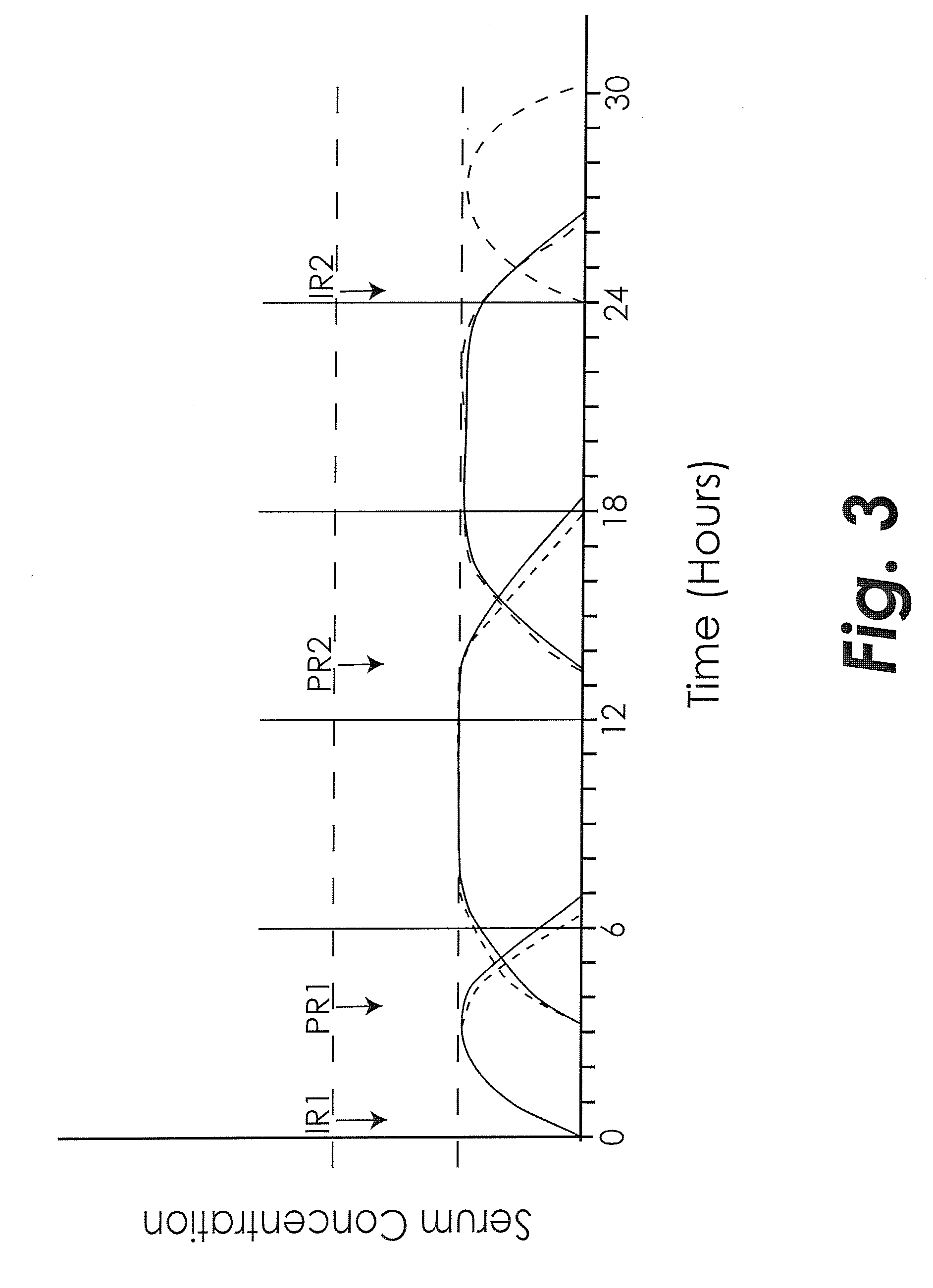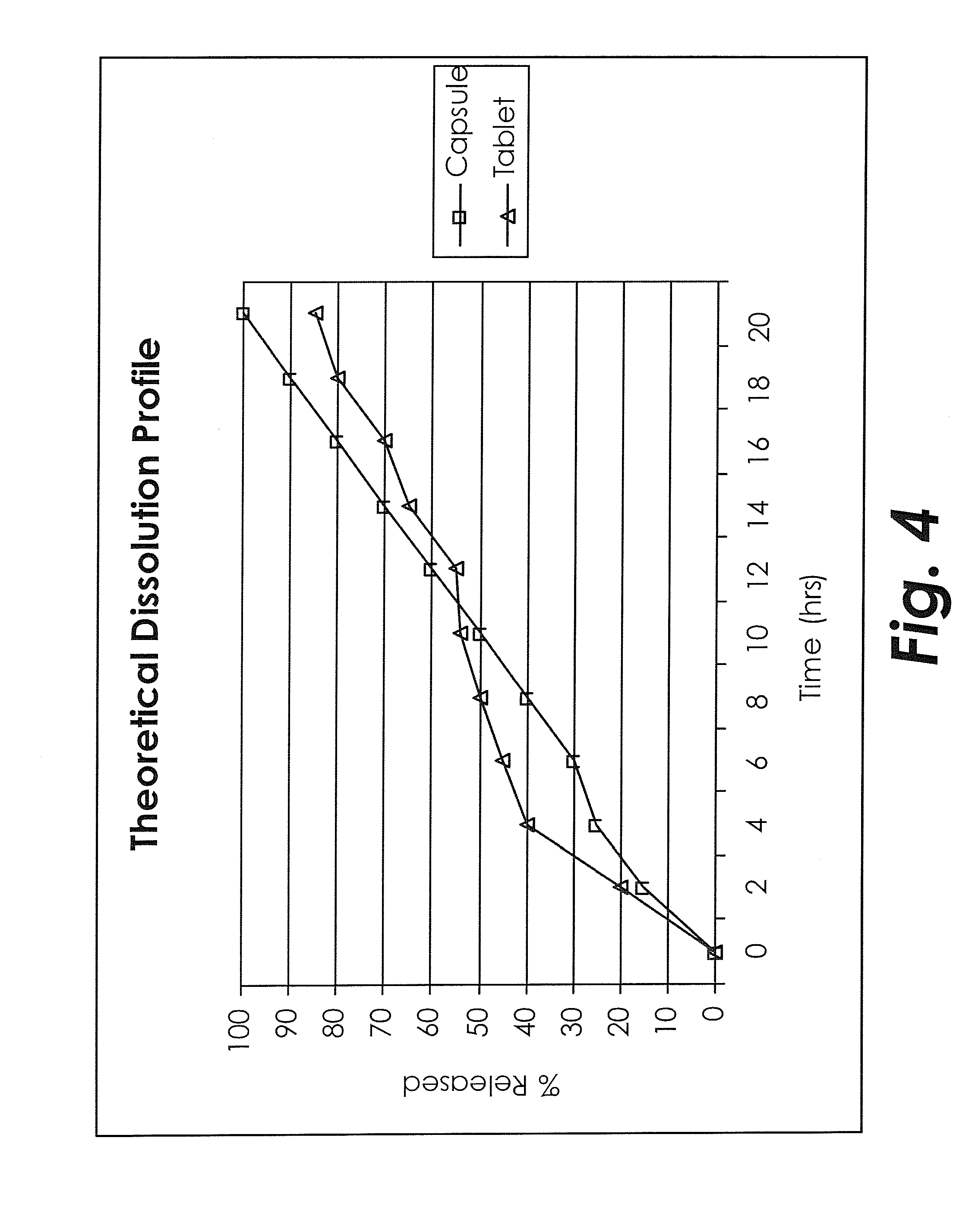Treating adhd and other diseases involving inflammation
- Summary
- Abstract
- Description
- Claims
- Application Information
AI Technical Summary
Benefits of technology
Problems solved by technology
Method used
Image
Examples
example 1
Treatment of 8 Year-Old Boy having ADHD
[0125]An 8-year old boy with ADHD is presently treated with 10 mg Adderall® twice per day, once in the morning before going to school, and a second dose while at school. The boy's parents report that he is disruptive and having other difficulties in the late afternoon and early evening. In addition to behavioral problems he is not able to fall asleep on his own, and for the past year has received Clonidine® 1 hour before bedtime. After a thorough medical exam, his treatment regimen is changed to 10 mg Adderall® XR given twice per day. The boy experiences a short-duration rise in blood pressure and heart rate, but vital signs return to normal within 2 days of changing dosage. After 1 week he is no longer having problems in the late afternoon and evening but he is feeling restless prior to bed and does not want to go to bed and stays up in his bed. He is then placed on Adderall XR three times a day as it is determined that the medication lasts 7 ...
example 2
Treatment of Adult Male with ADHD
[0126]A 30 year old male presents with feelings of anxiety, depression, and an inability to focus. He reports that he performed poorly in school though believed he was “smart.” After taking an in-depth medical and family history he is diagnosed with ADHD. He is slightly overweight, has a slight elevation in cholesterol, borderline hypertension, and some hypoglycemic episodes especially after a meal with a lot of sugar. He titrated up to 15 mg Focalin® XR three times a day, 300 mg grape seed extract and pomegranate extract. After 2 weeks of treatment he reports improvement in concentration ability and less anxiety and depression. His heart rate is decreased and his mean arterial blood pressure has decrease 20 points. He no longer experiences hypoglycemic episodes and his cholesterol has decreased. His appetite is normal, but he no longer has the desire to binge on sweets and has lost weight. The patient reports that this is the best he has felt in yea...
example 3
Treatment of 28 Year Old Female
[0127]A 28 year old female presents with diagnosed ADHD and hypertension with a systolic pressure of 170 mmHg and a diastolic pressure of 100 mmHg. She has PMS and migraine headaches. She reports previous treatment with 20 mg regular release Ritalin® twice per day. She desires to return to school in order to graduate from college but is concerned about her prospects for success because she reports difficulties with focusing in the late afternoon. She fears that her inability to focus will negatively impact her performance at school. After a thorough medical history and exam she is titrated up to 20 mg Adderall® XR three times per day and twice daily intake of 1200 mg fish oil. After 8 weeks her blood pressure and heart rate are lower and she reports feeling more focused, efficient and able to sleep through the night. She reports less fluid retention and that her PMS and migraine headaches have gone away. After 6 months she continues to “feel better” an...
PUM
| Property | Measurement | Unit |
|---|---|---|
| Time | aaaaa | aaaaa |
| Time | aaaaa | aaaaa |
| Time | aaaaa | aaaaa |
Abstract
Description
Claims
Application Information
 Login to View More
Login to View More - R&D
- Intellectual Property
- Life Sciences
- Materials
- Tech Scout
- Unparalleled Data Quality
- Higher Quality Content
- 60% Fewer Hallucinations
Browse by: Latest US Patents, China's latest patents, Technical Efficacy Thesaurus, Application Domain, Technology Topic, Popular Technical Reports.
© 2025 PatSnap. All rights reserved.Legal|Privacy policy|Modern Slavery Act Transparency Statement|Sitemap|About US| Contact US: help@patsnap.com



